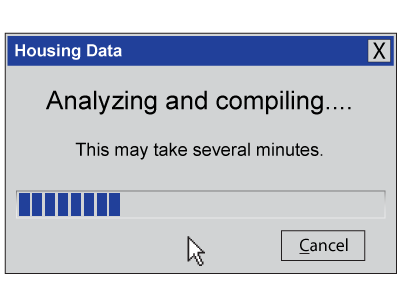Old and Less Relevant Data
We’re provided housing data from multiple sources, seemingly almost on a daily basis; but what does the data really say about what’s happening in the world of housing? It’s great to know that national home prices are up or down, but the numbers don’t mean much when it comes to what’s happening in your neighborhood or on your street. Averages culled from national housing data can be for any ZIP code and month and the sampled size is usually not large enough over a valid short term period to have any significance.
Home price data is most relevant when it reflects what happened last week or last month. This is due to delays in reporting collected data. Having a two-month delay with data is “unavoidable” says David Rathgeber, a real estate broker in northern Virginia. “Due to data collection limitation — the lag between contract and closing — and another month or two for data assembly, review, comment and publication.”
Rathgeber, says home price data is “recreational” rather than actionable. He points out that the quoted figures are usually old news, as much as four months after the data’s collection, even though they are often reported as the current month or the prior month. He also points out that taking action based on two to four month old information “can be a disaster.”
Prices appreciate or depreciate according to the mix of sold houses. With the rise of ‘pocket listings’ or properties that never get listed on MLS; much of the data can be skewed. Average home prices can change even when individual prices do not. If there’s a trend of rising prices, sellers may want to hold firm on their asking price although the house may be currently overpriced. Values will eventually catch up. If prices trend in the direction of depreciation, sellers would have to cut their inflated asking price at a greater rate than that of the overall market to better attract a buyer.
The true average rarely changes more than 1 percent from month to month. It may be better to view the data reports showing more than this with skepticism. In other words, as Rathgeber says, they are “patently meaningless.”
Also it’s good to look deeper into the two popular reports covering mortgage rates, one from HSH Associates and Freddie Mac.
Freddie Mac publishes a widely quoted monthly report on 30 and 15-year average mortgage rates. The parameters of the report’s premise is the average of the offerings to “prime” borrowers from 125 major national lenders with a 20 percent down-payment. Freddie Mac doesn’t have a true definition of what a “prime” borrower is and the fact that many borrowers do not make a 20 percent down-payment.
HSH culls its weekly average results from a survey of 600 “active” lenders who are able to make loans directly to consumers. HSH’s survey asks lenders about their pricing for 80 percent loan-to-value mortgages to a borrower with a 740 FICO score or better. This is not to condemn Freddie Mac’s HSH’s surveys, but to be aware that it’s better to do your own research.
Resource:
LA Times. “Beware the shortcomings of data on home prices and mortgage rates” 18 August 2014. http://www.latimes.com/business/realestate/la-fi-lew-20140817-story.html?track=rss&utm_source=feedburner&utm_medium=feed&utm_campaign=Feed%3A+latimes%2Fclassified%2Frealestate+(L.A.+Times+-+Real+Estate+News)


